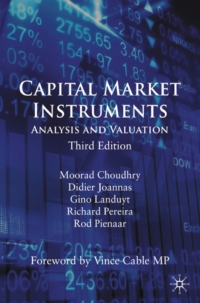[The following information applies to the questions displayed below.] Summary information from the financial statements of two companies competing in the same industry follows.
| | Barco Company | Kyan Company | | | Barco Company | Kyan Company |
| Data from the current year-end balance sheets | | Data from the current years income statement |
| Assets | | | | | | | | Sales | $ | 790,000 | | $ | 905,200 | |
| Cash | $ | 19,500 | | $ | 33,000 | | | Cost of goods sold | | 583,100 | | | 646,500 | |
| Accounts receivable, net | | 35,400 | | | 50,400 | | | Interest expense | | 7,500 | | | 10,000 | |
| Current notes receivable (trade) | | 9,400 | | | 8,000 | | | Income tax expense | | 15,185 | | | 24,990 | |
| Merchandise inventory | | 84,340 | | | 138,500 | | | Net income | | 184,215 | | | 223,710 | |
| Prepaid expenses | | 5,200 | | | 7,600 | | | Basic earnings per share | | 4.39 | | | 4.95 | |
| Plant assets, net | | 300,000 | | | 310,400 | | | Cash dividends per share | | 3.81 | | | 3.92 | |
| Total assets | $ | 453,840 | | $ | 547,900 | | | | | | | | | |
| | | | | | | | | Beginning-of-year balance sheet data |
| Liabilities and Equity | | | | | | | | Accounts receivable, net | $ | 30,800 | | $ | 57,200 | |
| Current liabilities | $ | 63,340 | | $ | 96,300 | | | Current notes receivable (trade) | | 0 | | | 0 | |
| Long-term notes payable | | 80,800 | | | 99,000 | | | Merchandise inventory | | 57,600 | | | 109,400 | |
| Common stock, $5 par value | | 210,000 | | | 226,000 | | | Total assets | | 418,000 | | | 412,500 | |
| Retained earnings | | 99,700 | | | 126,600 | | | Common stock, $5 par value | | 210,000 | | | 226,000 | |
| Total liabilities and equity | $ | 453,840 | | $ | 547,900 | | | Retained earnings | | 75,505 | | | 80,074 | |
| |
Required: 1a. For both companies compute the (a) current ratio, (b) acid-test ratio, (c) accounts (including notes) receivable turnover, (d) inventory turnover, (e) days sales in inventory, and (f) days sales uncollected. (Do not round intermediate calculations.) 1b. Identify the company you consider to be better short-term credit risk.
2a. For both companies compute the (a) profit margin ratio, (b) total asset turnover, (c) return on total assets, and (d) return on common stockholders equity. Assuming that share and each companys stock can be purchased at $70 per share, compute their (e) price-earnings ratios and (f) dividend yields. (Do not round intermediate calculations. Round your answers to 2 decimal places.) 2b. Identify which companys stock you would recommend as the better investment.
| |
| | | (d) | Inventory Turnover | | Company | Choose Numerator: | / | Choose Denominator: | = | Inventory Turnover | | | | / | | = | Inventory turnover | | Barco | | / | | = | 0 | times | | Kyan | | / | | = | 0 | times | |
| |
| | | (c) | Accounts Receivable Turnover | | Company | Choose Numerator: | / | Choose Denominator: | = | Accounts Receivable Turnover | | | | / | | = | Accounts receivable turnover | | Barco | | / | | = | 0 | times | | Kyan | | / | | = | 0 | times | |
| |
| | | (d) | Inventory Turnover | | Company | Choose Numerator: | / | Choose Denominator: | = | Inventory Turnover | | | | / | | = | Inventory turnover | | Barco | | / | | = | 0 | times | | Kyan | | / | | = | 0 | times | |
| |
| | | (e) | Days Sales in Inventory | | Company | Choose Numerator: | / | Choose Denominator: | x | Days | = | Days Sales in Inventory | | | | / | | x | | = | Days sales in inventory | | Barco | | / | | x | | = | 0 | days | | Kyan | | / | | x | | = | 0 | days | |
| |
| | | (f) | Days' Sales Uncollected | | Company | Choose Numerator: | / | Choose Denominator: | x | Days | = | Days' Sales Uncollected | | | | / | | x | | = | Days' sales uncollected | | Barco | | / | | x | | = | 0 | days | | Kyan | | / | | x | | = | 0 | days | |






